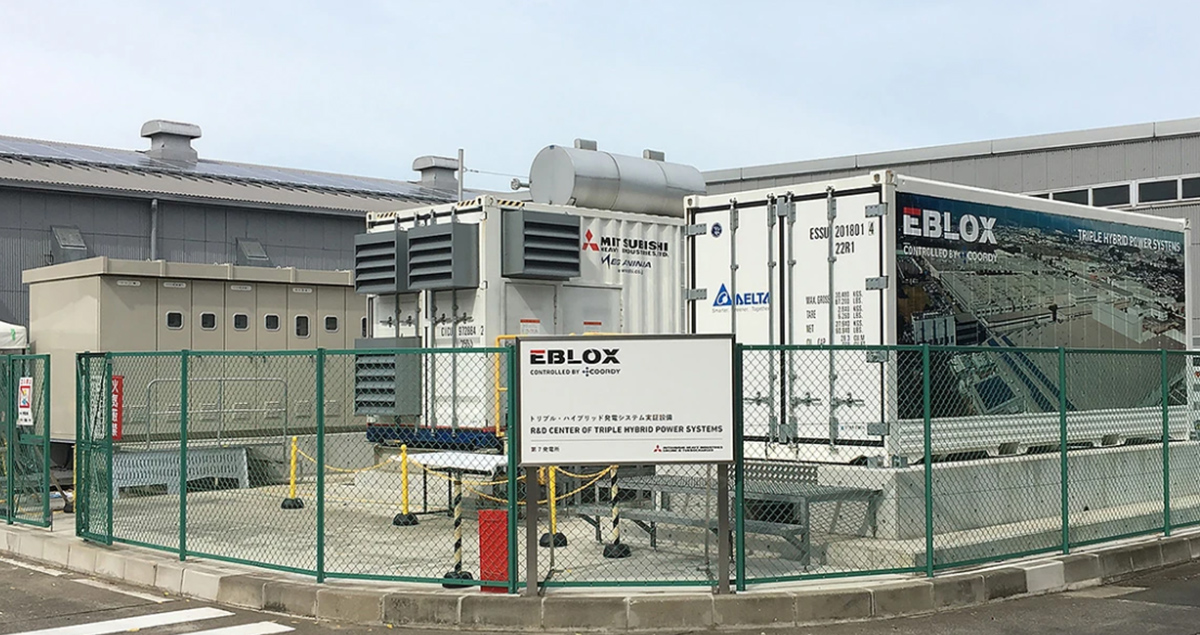Braving typhoons to power a remote Japanese island

Typhoon season can be a dangerous time of year for residents of Japan’s remote Hateruma Island. When big storms hit, the inhabitants down tools and seek shelter from the lashing rains and biting winds. But engineer Motoyuki Ninomiya had a job to do.
With storms battering the island, which is closer to Taiwan than the Japanese mainland, he and his team of engineers from Mitsubishi Heavy Industries Engine & Turbocharger (MHIET) battled the elements to build a generator to supply electricity to the isolated island community.
“To complete the project, our team endured multiple typhoons, dangerous ocean currents, week-long shipment delays, and depleted food provisions”, Ninomiya explains.
Despite these factors disrupting the construction schedule, the work had to go on: the new generator was vital for the 274 houses on Japan’s southernmost island and its local economy, which produces the well-known black sugar crop.
“When typhoons strike the island, high winds regularly obstruct the use of wind turbines”, he adds.
While local power needs are partially met by wind turbines at certain times of the year, the islanders also rely on diesel power from the generator system, especially during periods of unstable weather.
Integrating these two power sources was the most effective way of balancing a stable electricity supply with minimal environmental impact.
Hard to reach
Although remote – it is three hours by plane and a further hour by boat from Tokyo – Hateruma Island is part of Japan, which is one of the largest economies in the world, with advanced infrastructure and transport links.
The obstacles involved in bringing power to other isolated parts of the Asia Pacific region, which face critical infrastructure challenges, can be even greater.
Across the region, it is often uneconomical to connect sparsely populated locations, including islands and mountain communities, to a national power grid. At the same time, a common vulnerability to adverse or extreme weather and geographic conditions make it difficult to rely on renewable energy sources, like wind or solar.
Providing a reliable, stable electricity supply to these remote communities often depends on diesel generators, such as the Mitsubishi Generators Series, which Mitsubishi Heavy Industries Engine Systems Asia (MHIESA) has deployed to power small islands in Indonesia, the Maldives, and others.
And the region’s demand for energy is growing rapidly. The International Energy Agency’s Southeast Asia Energy Outlook 2019 report shows Southeast Asia is home to nearly one in 10 of the world’s population and boasts some of the fastest expanding economies on the planet.
Access to electricity is also growing rapidly across the region, which is set to achieve universal access by 2030.
Most of the 80% increase in electricity demand since the start of the century has been powered by fossil fuels. However, the appetite for energy is now being tinted with a growing awareness of the impact of climate change and the need to decarbonize.
Environmental concerns
Policymakers in Southeast Asia are now ramping up efforts to develop secure, affordable, and environmentally friendly energy sectors, according to the IEA. This trend includes boosting energy efficiency by investing in sustainable energy technology, fuels, and infrastructure.
For remote communities, this creates opportunities to break their dependence on diesel by mixing traditional generators with clean energy generation and storage to create hybrid power solutions.
Although renewable energy sources currently provide a modest part of the region’s energy needs, there are opportunities for growth.
The region’s take-up of renewables has not mirrored the spikes seen in other parts of the world, often due to price and geographic challenges. However, as prices continue to fall, some regional actors are investing in developing frameworks to increase the deployment of renewables by attracting additional private sources of capital.
Under currently announced policy targets, the share of renewables in the power generation of Southeast Asian countries is set to reach 30% by 2040, up from 24% today.
While this falls far short of the levels reached in countries like China, India and other rapidly expanding Asian economies, there are signs Southeast Asia’s power mix is changing. The first half of 2019 saw approvals for solar PV projects exceed approvals for new coal-fired capacity for the first time.
Mixing it up
While this is good news for the region’s towns and cities, getting power to small islands or off-grid communities like Hateruma, which are far from urban centers, remains a challenge.

One potential solution – currently under development – is the use of hybrid systems, like the Eblox system developed by MHIET. These decentralized mini grids blend clean renewable power with traditional technology to generate stable power in areas not covered by mains supply networks.
Eblox is a mix of solar panels, battery storage and a diesel engine, which can change the lives of people living in remote areas. The three components work in harmony, while minimizing the impact on the environment.
Throughout daylight hours, solar panels harvest clean energy from the sun while it shines. When the sun’s rays are obscured, a powerful battery provides temporary backup to stabilize supply and boost it during times of peak demand.
As darkness falls, a diesel engine takes over to generate electricity through the night. Once daybreak arrives, the system reverts to producing clean solar energy supported by battery power.
At the heart of Eblox, the Coordy smart control system ensures each component uses its full capacity to maximize clean energy where possible, while continually recharging the battery to store any surplus energy.
Although still at the prototype stage, it is estimated the system will use between 30-50% less fuel than traditional generators. Once deployed, hybrid systems like Eblox could change the lives of Hateruma Island residents and other remote communities, giving households and businesses access to stable, cost-effective, and environmentally-friendly energy.
Motoyuki Ninomiya moved from Mitsubishi Heavy Industries Engine & Turbocharger to Mitsubishi Heavy Industries Engine Systems in January 2020.





